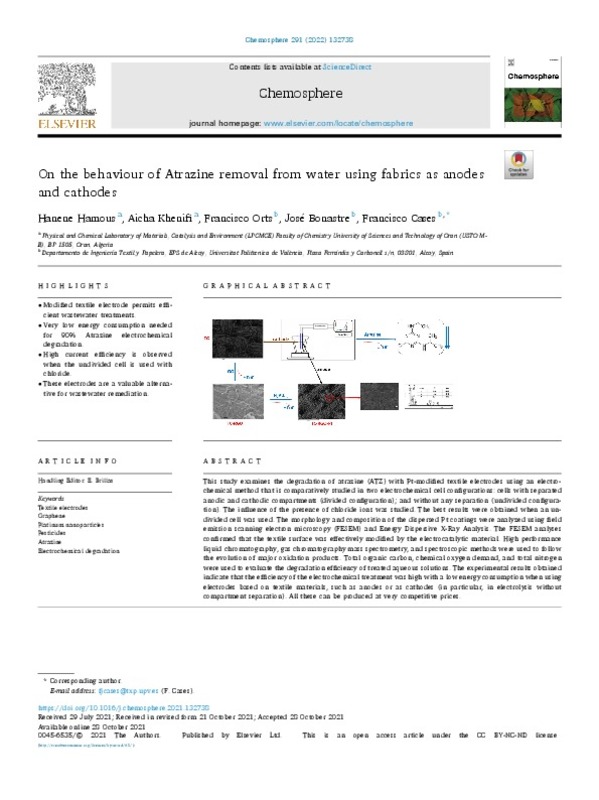JavaScript is disabled for your browser. Some features of this site may not work without it.
Buscar en RiuNet
Listar
Mi cuenta
Estadísticas
Ayuda RiuNet
Admin. UPV
On the behaviour of Atrazine removal from water using fabrics as anodes and Cathodes
Mostrar el registro completo del ítem
Hamous, H.; Khenifi, A.; Orts Maiques, FJ.; Bonastre Cano, JA.; Cases, F. (2022). On the behaviour of Atrazine removal from water using fabrics as anodes and Cathodes. Chemosphere. 291(Part 1):1-8. https://doi.org/10.1016/j.chemosphere.2021.132738
Por favor, use este identificador para citar o enlazar este ítem: http://hdl.handle.net/10251/179751
Ficheros en el ítem
Metadatos del ítem
| Título: | On the behaviour of Atrazine removal from water using fabrics as anodes and Cathodes | |
| Autor: | Hamous, Hanene Khenifi, Aicha | |
| Entidad UPV: |
|
|
| Fecha difusión: |
|
|
| Resumen: |
[EN] This study examines the degradation of atrazine (ATZ) with Pt-modified textile electrodes using an electrochemical method that is comparatively studied in two electrochemical cell configurations: cells with separated ...[+]
|
|
| Palabras clave: |
|
|
| Derechos de uso: | Reconocimiento - No comercial - Sin obra derivada (by-nc-nd) | |
| Fuente: |
|
|
| DOI: |
|
|
| Editorial: |
|
|
| Versión del editor: | https://doi.org/10.1016/j.chemosphere.2021.132738 | |
| Código del Proyecto: |
|
|
| Agradecimientos: |
Spanish Agencia Estatal de Investigacion (AEI) and European Union (FEDER funds) are acknowledged for the financial support (contracts MAT 2016-77742-C2-1-P and CTQ 2017-90659-RED). Chemviron Carbon who kindly donated the ...[+]
|
|
| Tipo: |
|









